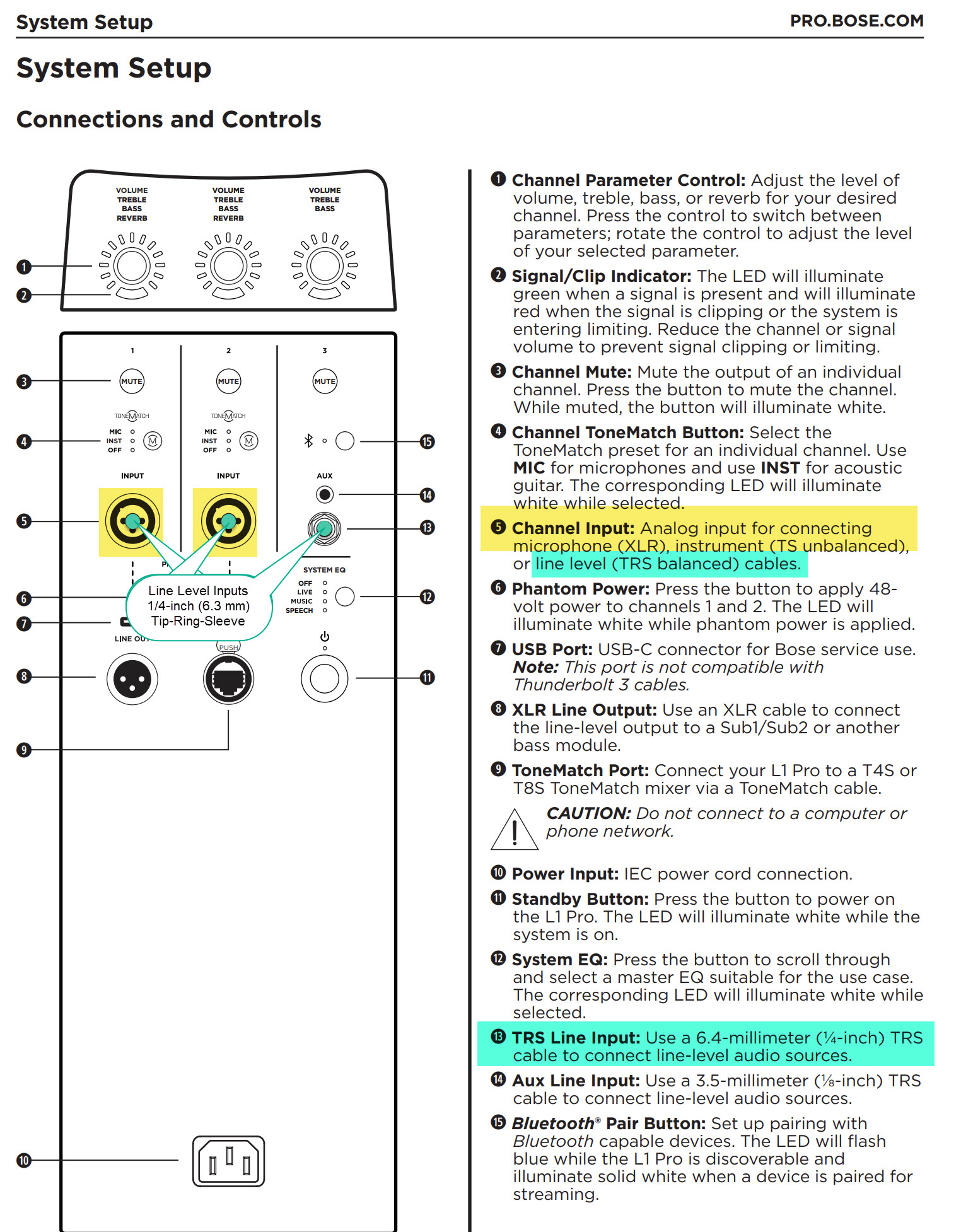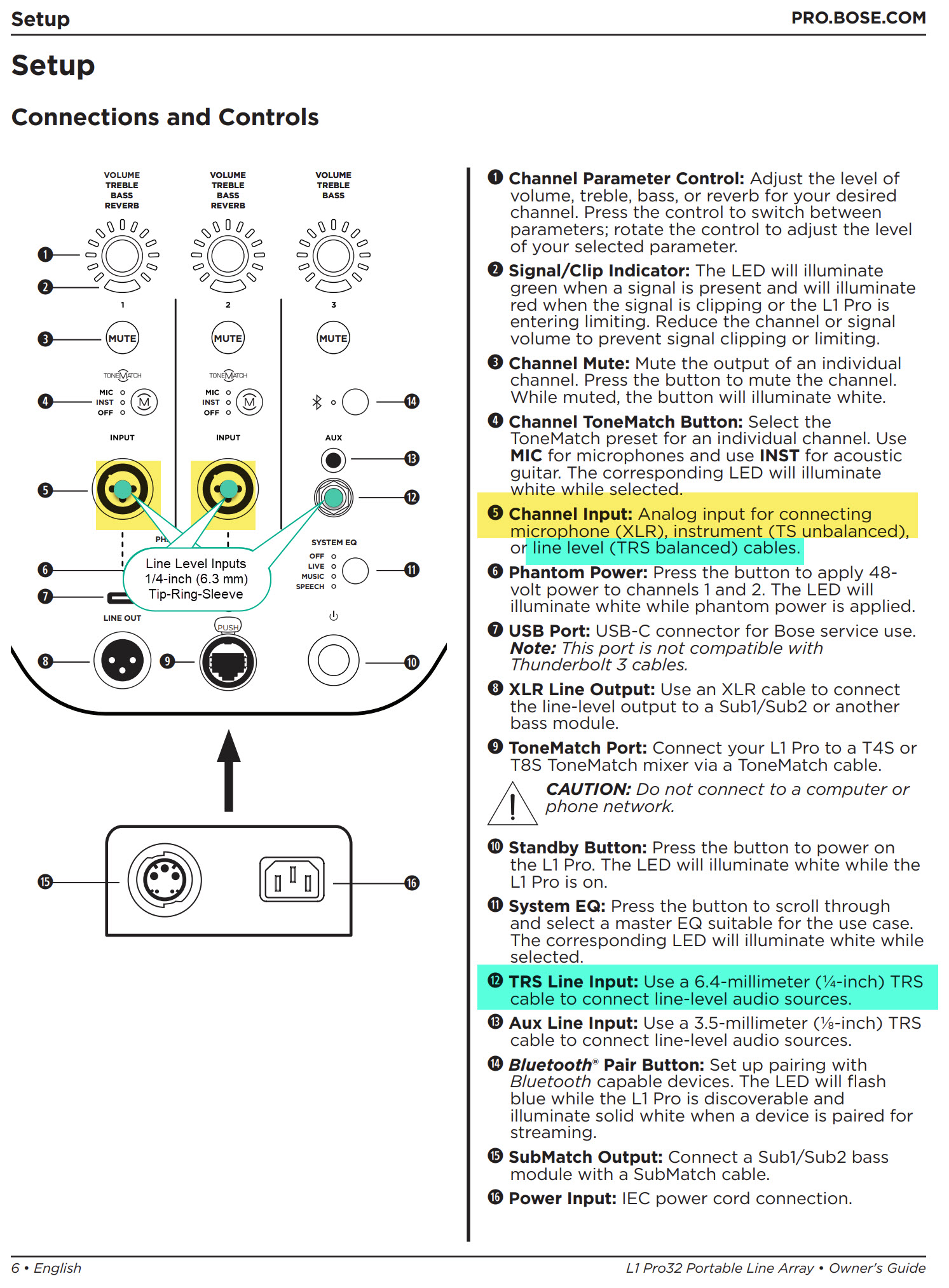Difference between revisions of "Mixer to L1 Pro"
(Created page with "To connect a mixer to an L1 Pro Most mixers have line-level outputs. The L1 Pro line-level inputs are the 1/4-inch (6.3 mm) Tip-Ring-Sleeve jacks on channels 1, 2, 3. ;Don...") |
m (→L1 Pro16) |
||
| Line 13: | Line 13: | ||
[[File:L1 Pro16 Line Level Inputs.jpg]] | [[File:L1 Pro16 Line Level Inputs.jpg]] | ||
| − | == L1 | + | == L1 Pro32 == |
[[File:L1 Pro32 Line Level Inputs.jpg]] | [[File:L1 Pro32 Line Level Inputs.jpg]] | ||
Revision as of 21:41, 8 April 2022
To connect a mixer to an L1 Pro
Most mixers have line-level outputs. The L1 Pro line-level inputs are the 1/4-inch (6.3 mm) Tip-Ring-Sleeve jacks on channels 1, 2, 3.
- Don't connect Line-Level Inputs to the XLR Inputs (Inputs 1 and 2) on the L1 Pro.
- Connecting a line-level source (such as mixer output) to a mic-level input will cause the sound to be loud and distorted because the line signal is much stronger than what the mic input will accept. Inputs and outputs on many mixers are switchable for either mic or line level operation.
The nomenclature of "line" is from "telephone line." When the telephone network was being developed in the early 20th century, the nominal level of a telephone signal as it travelled along telephone cables was around 1 volt. So, 1 volt was a "line level" signal. [1]
L1 Pro8 and L1 Pro16
L1 Pro32

